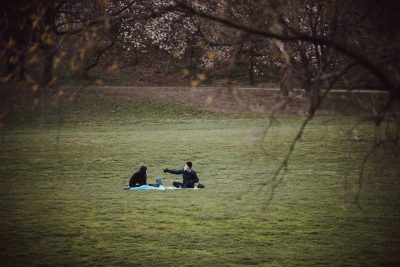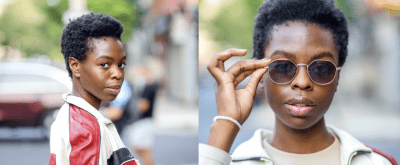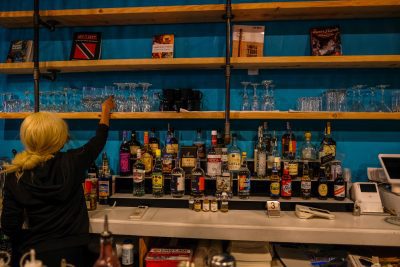All photos by Scott Lynch
Richard Wright’s haiku / gracing the walls of Brooklyn / shimmering brightly
A new public art installation honors the one-time Fort Greene resident by displaying his poetry throughout the downtown area
In the late 1930s, while working on the first draft of what would become his seminal novel “Native Son,” Richard Wright lived at 175 Carlton Avenue, and spent many afternoons taking notes in nearby Fort Greene Park. So it’s fitting that Fort Greene, and Downtown Brooklyn next door, is playing host to a new public art project called “Seeing Into Tomorrow,” a multi-venue mural installation featuring seven of Wright’s haiku, a form he immersed himself in the last months of life as a kind of defiant act of hope.
It’s the latest public art initiative from the Downtown Brooklyn and Dumbo Art Fund, working in this case with The Poetry Society of America. The Art Fund came about as part of a $10 million package from New York State to create vibrant neighborhoods, boost local economies and revitalize communities.
Most of that money went to “improving streets and parks,” Regina Myer, president of the Downtown Brooklyn Partnership, tells Brooklyn Magazine. “But happily there was also a prioritization to add a layer of art and culture to this kind of activity. So we put out a call for arts to find works that celebrate our incredible neighborhood, to celebrate those who have contributed to our incredible neighborhood, and that look forward to the future with a lens towards social justice and the great diversity we have right here.”
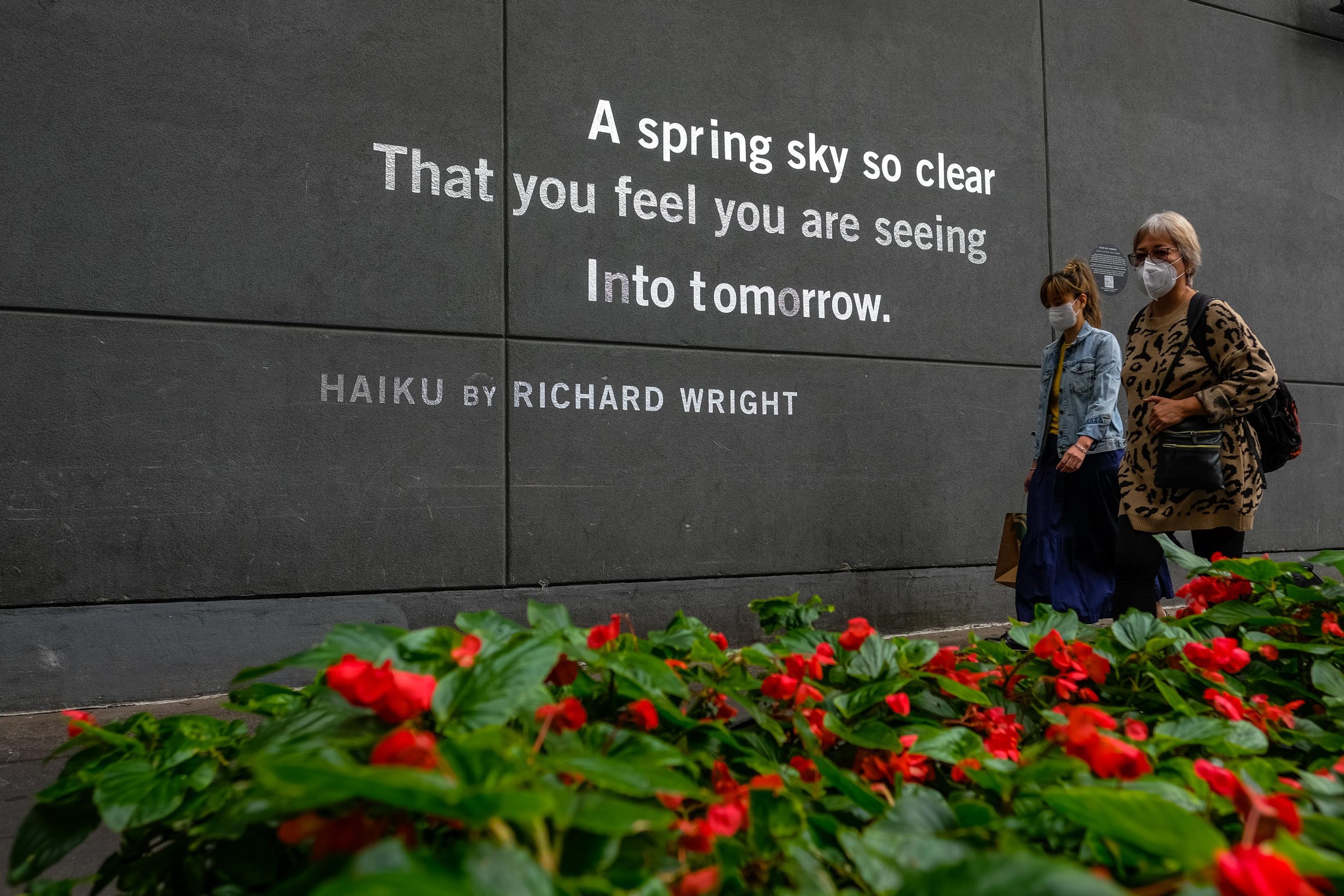
Scott Lynch
Haiku, the short-form Japanese poetry consisting of seventeen syllables—in three lines of five, seven, and five—traditionally evoke images of the natural world, and Wright’s haiku are no exception:
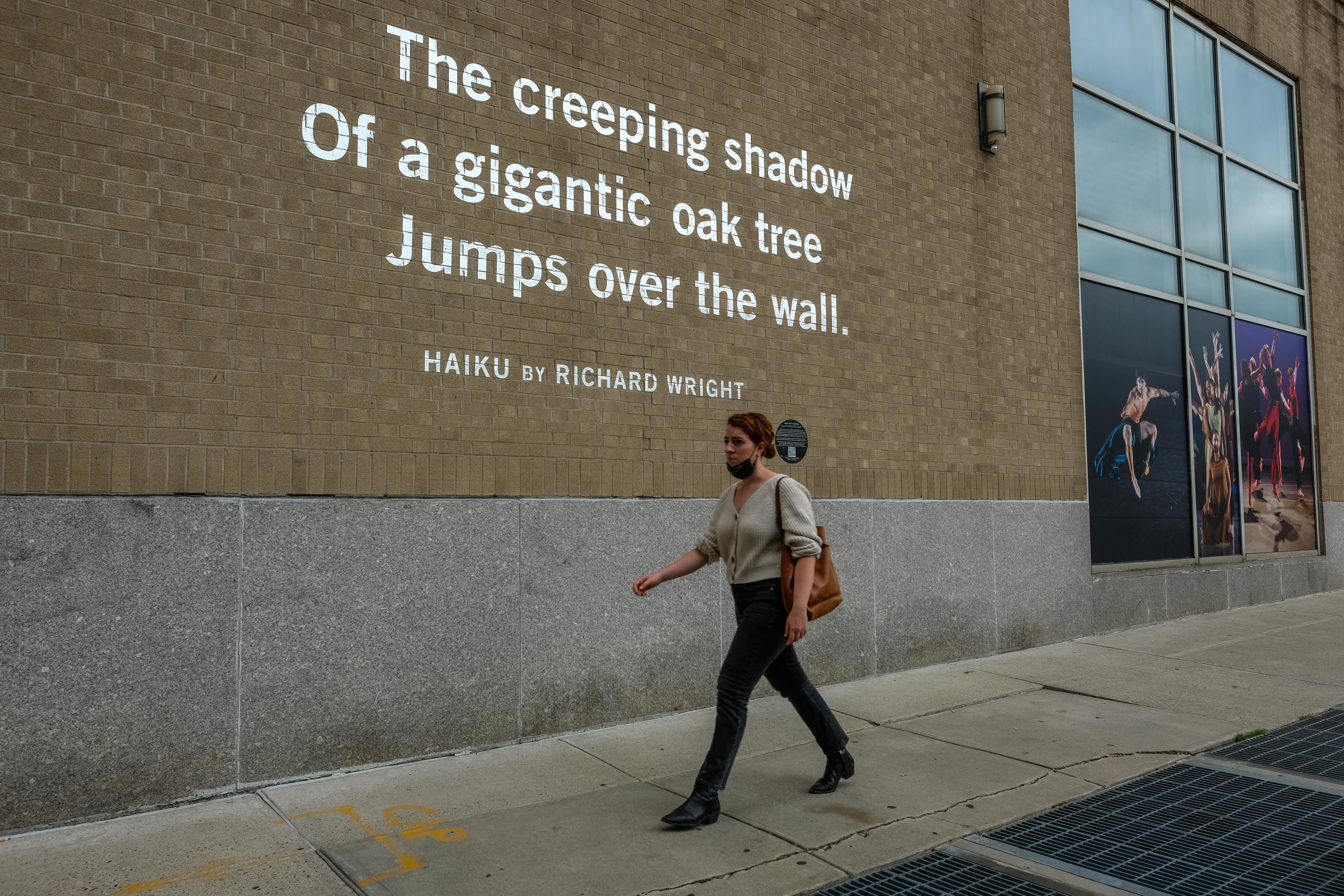

Scott Lynch
There are seven murals in all, designed by the agency Doyle Partners and spread throughout the two neighborhoods, each presenting a different Wright haiku rendered in shimmery metallic vinyl type that fades in and out with the light. The effect adds an odd ephemeral quality to the poems—at first glance, if the sun is hitting it right, it appears as if multiple letters, or even whole words, have fallen off, or faded—but also brings a lot of visual energy to the work. A
nd, as Myer puts it, even though they’re set at eye level, it adds a level of serendipity to spotting the installations, “which in a way is its own brand of subversiveness.”
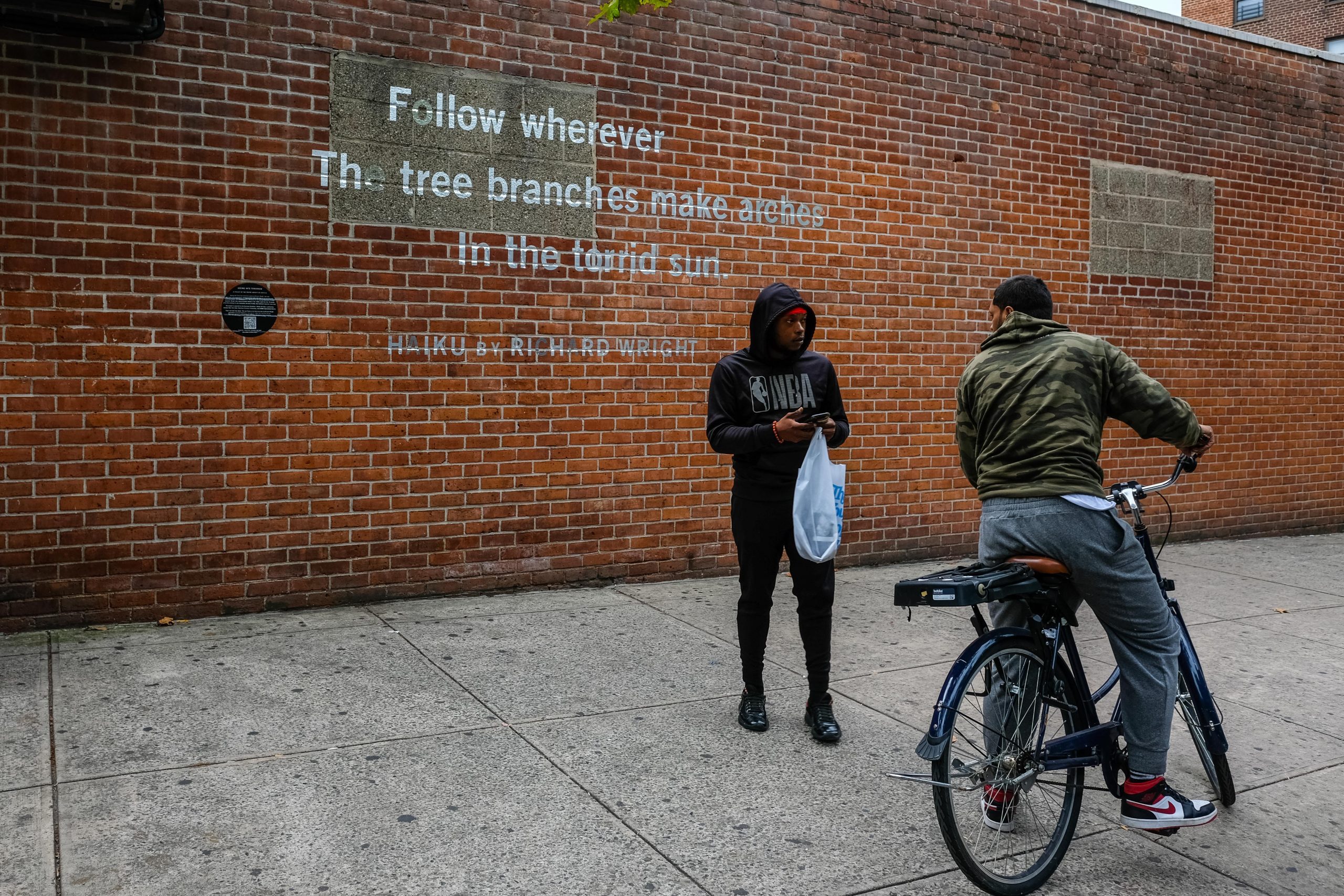

Scott Lynch
Most of the pieces are located just off Fulton Street—in Willoughby Plaza, for example, or on the wall of BRIC Arts Media—but there is also a pair up on Myrtle Avenue, on the grounds of Whitman Houses public housing development. Here’s a handy map where you can find all seven. There are also various Wright poems printed on 38 of those Big Belly trash bins scattered throughout the neighborhood.
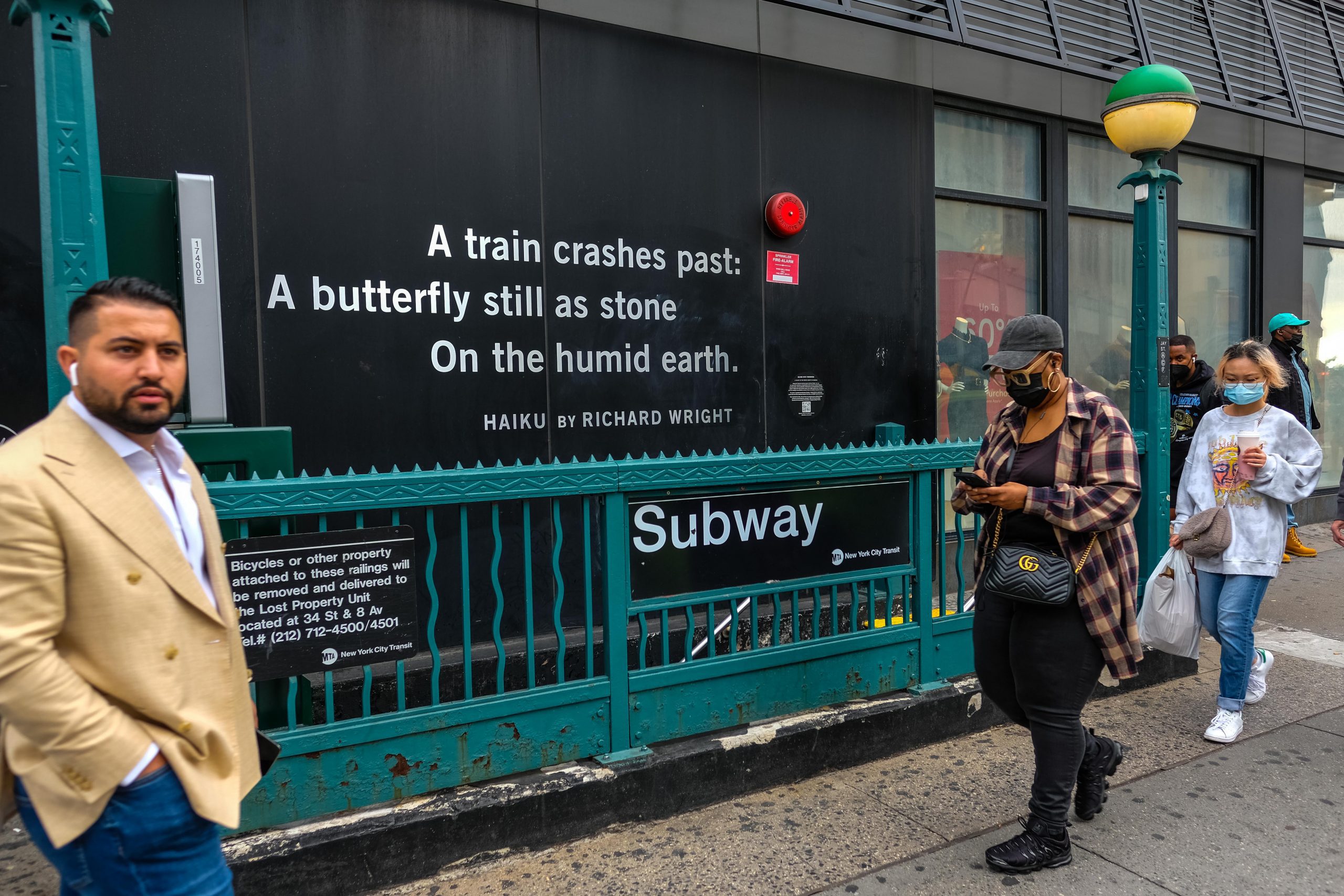

Scott Lynch
The entire installation will be on display in the neighborhoods through August 30.
You might also like 

















